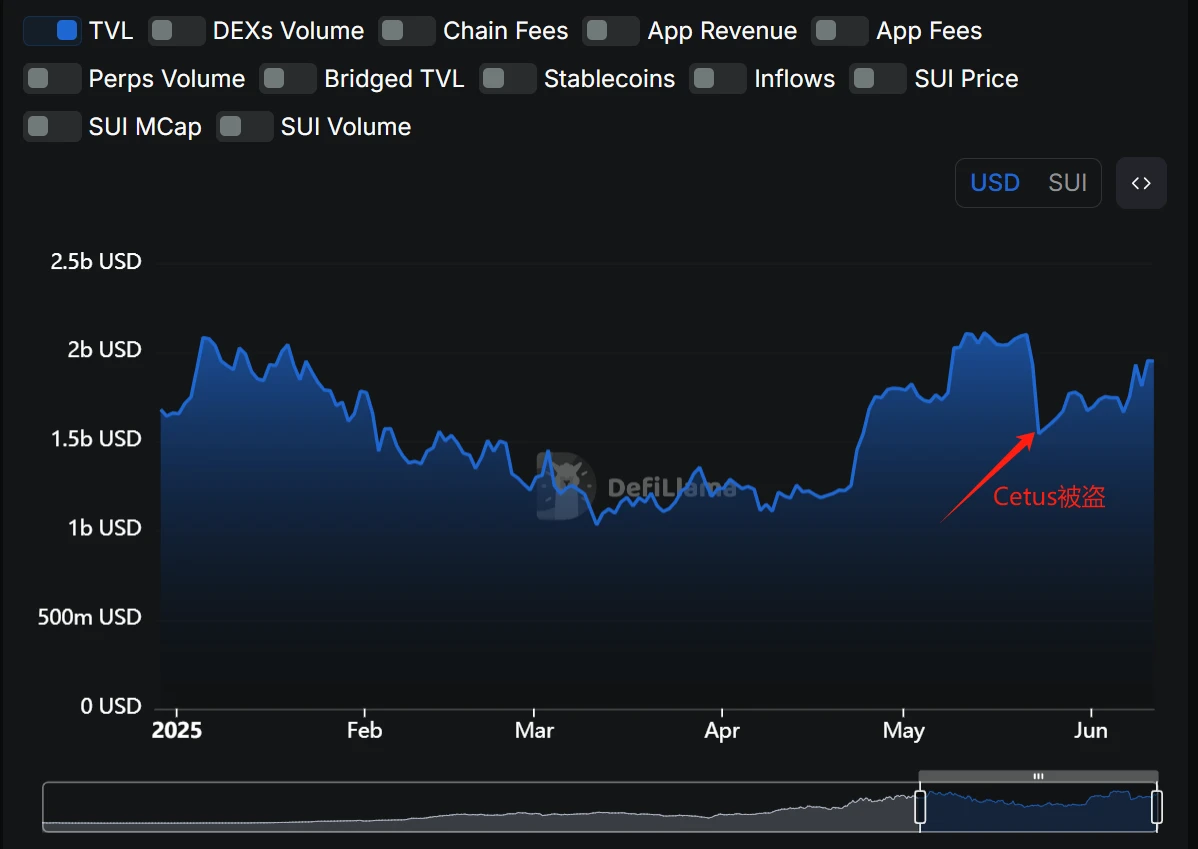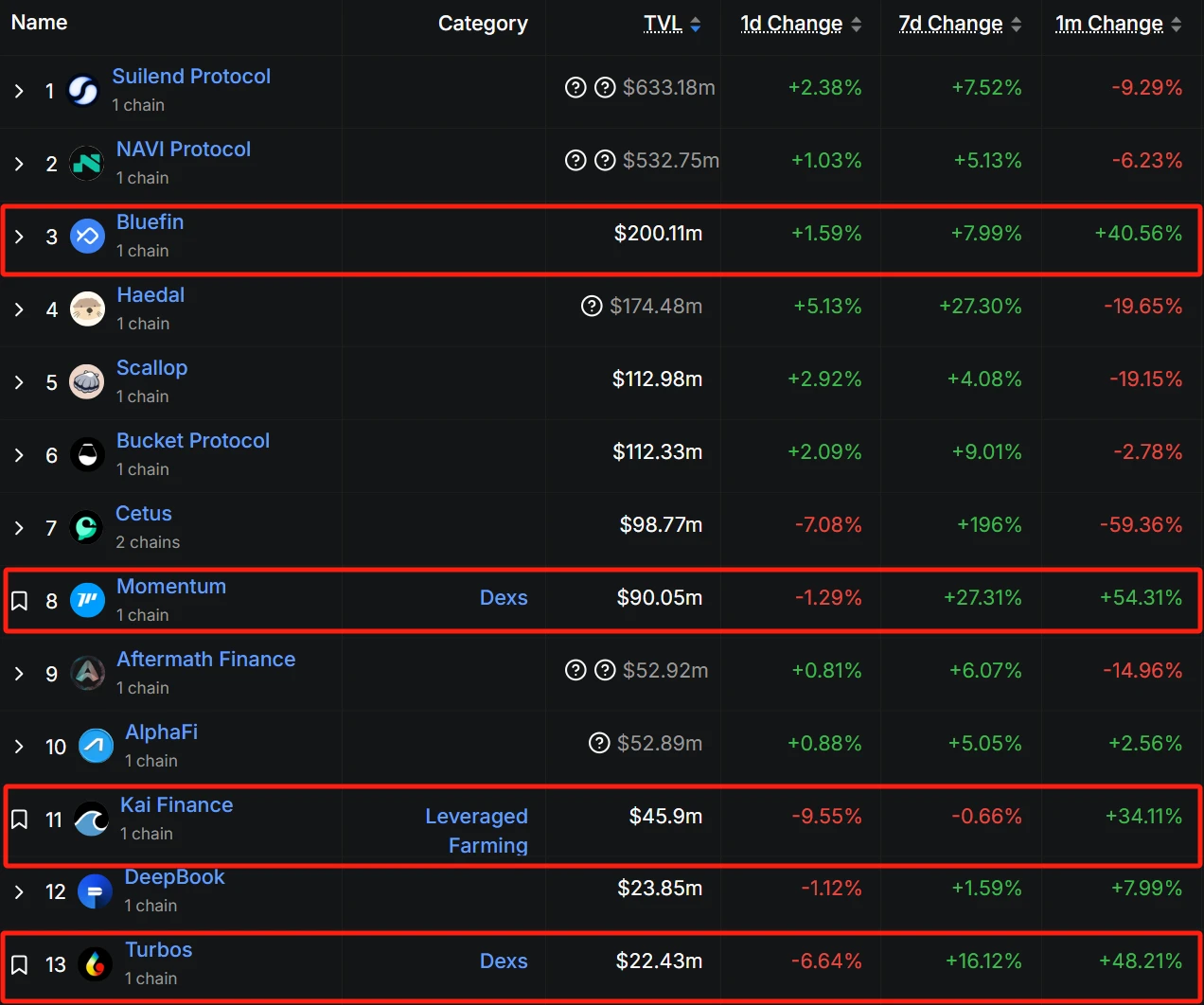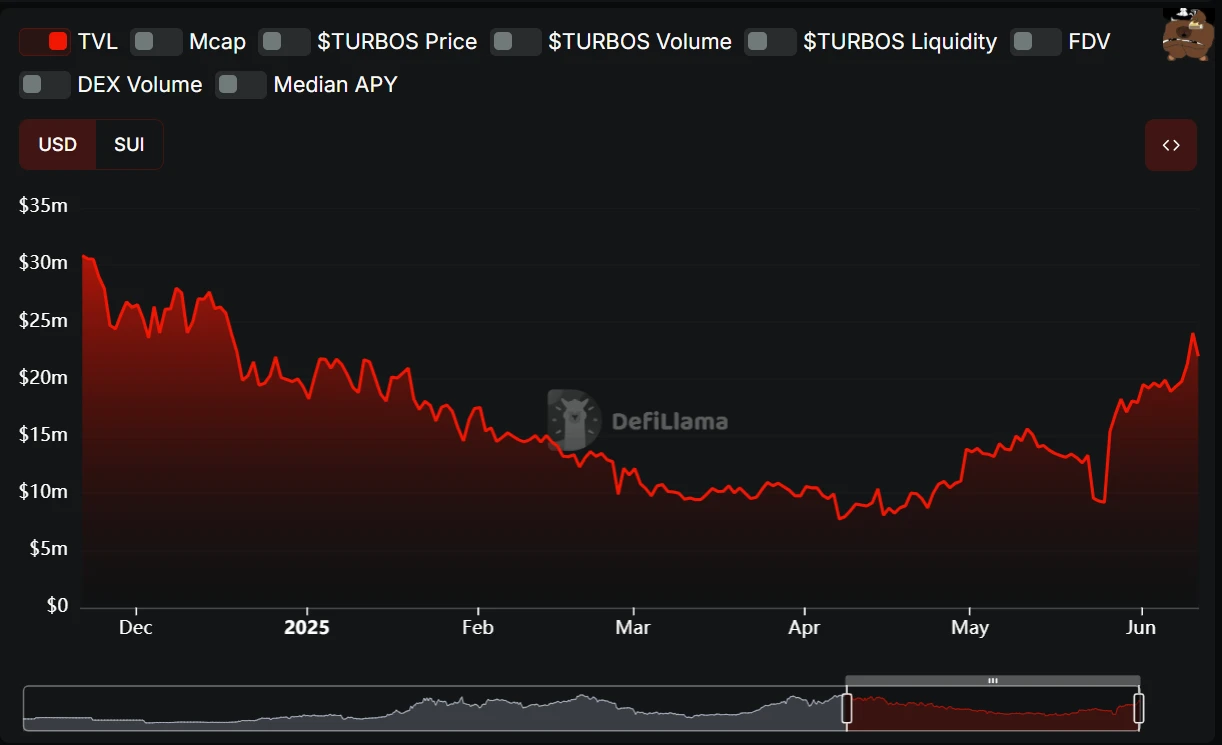Original | Odaily Planet Daily ( @OdailyChina )
Author | Dingdang ( @XiaMiPP )

On May 22, Cetus, a decentralized trading platform of the Sui ecosystem, was hacked, resulting in a loss of approximately $223 million. This incident had a significant impact on the ecosystem as a whole, not only causing panic among users, but also directly leading to an outflow of funds on the chain. According to on-chain data, the total locked value (TVL) of the Sui network fell from a high of approximately $2.1 billion to a low of $1.57 billion, a drop of more than 25%, and the ecosystem as a whole is facing severe challenges.
After the incident, Cetus quickly took emergency measures. With the cooperation of most Sui verification nodes, the Cetus team successfully froze the two main wallet addresses used by the attacker to transfer funds. At the same time, Cetus quickly cooperated with the Sui security team and several security auditing agencies to conduct a comprehensive audit of the smart contract and develop a recovery plan for user assets. In addition, the Cetus team invested all of its own cash reserves of US$7 million and obtained a loan of 30 million USDC from the Sui Foundation for user asset compensation.
On June 8, the Cetus protocol officially resumed operations and reopened all functions including trading and liquidity management. The liquidity of the affected fund pools has recovered to 85%-99%. Cetus also promised to use 15% of the total tokens of the protocol to compensate the affected users, of which 5% can be collected immediately and 10% will be unlocked linearly within the next year.
Although this incident has brought a significant impact on the ecosystem, judging from the on-chain data, Suis TVL is gradually recovering. As of now, TVL has recovered to 1.92 billion US dollars, close to the level before the incident. This rebound not only shows that user confidence is recovering, but also reflects that some protocols are attracting new capital inflows and playing a bottoming role.

During this “post-disaster repair” process, four protocols stood out in terms of TVL and user growth: Momentum, Turbos, Bluefin, and Kai.

Momentum: The growing ve(3, 3) DEX
Momentum is the first decentralized trading platform with native ve (3, 3) mechanism on Sui. Through the governance token veMO and voting incentives, users can obtain transaction fee sharing and protocol incentives by locking assets, encouraging long-term participation and protocol governance. This model originated from Curve and can effectively mobilize the enthusiasm of liquidity providers (LPs), token holders and protocol governance.
Since its launch in March this year, Momentum has grown rapidly in terms of TVL and transaction volume. As of now, its TVL has exceeded 89 million US dollars, reaching an all-time high, and is one of the most outstanding protocols in the Sui ecosystem. Currently, Momentums total transaction volume has exceeded 3.6 billion US dollars, and the cumulative number of users has exceeded 420,000. Recently, Momentum completed a new round of strategic financing led by OKX Ventures and participated by Coinbase Ventures, further enhancing its ecological expansion capabilities.
Turbos: A safe haven in times of crisis
Turbos is a DEX that was deployed on the first day of Sui mainnet launch. In terms of architectural design, Turbos emphasizes module decoupling, and each functional module is relatively independent. This structure effectively reduces systemic risks technically. For this reason, in this Cetus security incident, Turboss contract did not involve any functions with vulnerabilities, and the entire platform was not affected.
After the incident, Turbos quickly launched a self-examination and simultaneously invited a number of third-party security organizations including Mysten, OtterSec, MoveBit and CertiK to conduct independent audits. The results showed that the vulnerability did not affect the normal operation of Turbos. More importantly, during the period when other platforms suspended services, Turbos has maintained stable operation without transaction interruption, reflecting the platforms technical maturity and security resilience.
Judging from the TVL data, the capital return rate of Turbos has significantly accelerated since the Cetus incident stabilized. Driven by the recovery of market confidence, many mainstream Memecoins have transferred most of their liquidity to Turbos, including LOFI, reflecting the markets recognition of its technical stability and security.

In addition to security guarantees, Turbos has recently launched multiple liquidity incentive pools, including SUI-USDC and zero-impermanent-loss USDT-USDC, to further attract users to participate in liquidity provision and increase platform activity.
Bluefin: Focus on on-chain derivatives trading
Bluefin is a protocol focused on decentralized derivatives trading, providing users with financial products such as perpetual contracts. Its product structure relies on on-chain matching and clearing mechanisms, with high transparency and operational stability. Bluefins matching engine optimizes trading efficiency while reducing slippage, making it suitable for medium and high-frequency traders and hedging strategy users.
At present, the Bluefin platform maintains a relatively stable trading activity and continues to expand its user base and product portfolio. It is an important part of the derivatives market on Sui.
Kai Protocol: Automated Asset Management Platform
Kai is a protocol that provides automated strategy management, focusing on providing users with on-chain asset allocation and revenue aggregation services. Users can deploy strategy pools to obtain functions such as automatic reinvestment and risk adjustment, reducing operational complexity.
Kais mechanism is suitable for users who want to achieve stable returns with a lower level of participation, and its strategy portfolio is also constantly expanding to cover investment needs with different risk preferences. At present, the platform has attracted a group of users who prefer stable investment, and TVL is showing a steady growth trend.
Overall, although the Cetus incident caused a temporary impact on the Sui ecosystem, it also became a verification node for the resilience of the ecosystem. The stable growth of Momentum, Turbos, Bluefin and Kai not only supported TVL in the short term, but also demonstrated its comprehensive strength in mechanism design, security strategy and user appeal. As the ecological recovery progresses, user confidence is slowly warming up. Sui is gradually stepping out of the shadow of the black swan event and moving towards a new stage.










